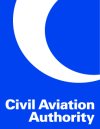CAA publishes final decision on Mode S expansion

The UK Civil Aviation Authority (CAA) today published its final decision on proposals for a second phase of expansion in the use of Mode S transponders in UK airspace.
Following an extensive consultation on a variety of proposals, the CAA has decided to focus on the busiest and most complex areas of airspace for the expansion of Mode S transponders.
The CAA intends to introduce:
Regulation to require all aircraft (except gliders) flying within Class A to C controlled airspace to carry and operate a Mode S transponder with effect from 1 October 2009.
An extension of the Mode S transponder carriage regulations to include gliders with effect from 6 April 2012.
Amendments to the transponder carriage regulations applicable to Self-Launching Motor Gliders (SLMG) to bring these into line with the regulations for all other gliders.
There will still be the option for air traffic control to allow non-transponder equipped flights into the airspace, providing safety and efficiency levels can be assured.
Mark Swan, CAA Director of Airspace Policy, said: This second phase of transponder regulations builds on the introduction of Mode S as the means of compliance for mandatory transponder carriage which came into effect in March 2008. These changes further increase the use of technical interoperability to enhance safety. By adopting a measured approach, the increased use of transponders will enhance the culture of a collaborative approach to safety of flight by all users, without being unduly restrictive.
Although gliders will now be included in the transponder carriage rules from 2012, we will be encouraging agreements between gliding organisations and air traffic control to permit gliders without transponders to access controlled airspace where conditions permit. Even though there is a general requirement for transponder carriage above FL100 in the UK, there will be no requirement for transponder carriage on gliders when operating in current active designated gliding areas. We will work with gliding organisations to consider additional areas from FL100 upwards by 2012.
The CAA acknowledges the problems of fitting transponders to Self Launching Motor Gliders (SLMG) and will amend the regulations to treat them as other gliders for the purposes of the transponder carriage.
The CAA will also amend the Airspace Change Process (ACP) to allow air traffic control service providers to apply for the introduction of compulsory transponder carriage in other specific volumes of airspace.
Under existing transition arrangements associated with the previous expansion of Mode S transponder carriage in UK airspace, operators of aircraft wishing to operate in mandatory transponder carriage airspace that are equipped with Mode A/C transponders have until 31 March 2012 to complete the necessary upgrades to Mode S.
Mark Swan said: Throughout the consultations on Mode S we have had extensive feedback from the General Aviation community. We have taken these views on board and I believe our final decision balances the wider needs of the aviation community with the overriding requirement for safety of flight.
The full CAA decision and further background material is available on the CAA website at www.caa.co.uk/modes. A fact sheet on Mode S is also available at http://www.caa.co.uk/docs/1/Mode%20S%20decision%20-%20In%20Focus.pdf


.jpg)
.png)





Comments
There are no comments yet for this item
Join the discussion